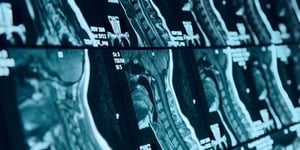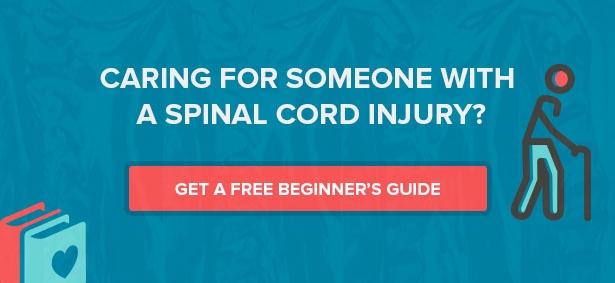What You Need to Know about Spinal Cord Strokes
When most people think of their loved one having a stroke, they commonly picture the scenario of a cerebral infarction, which involves oxygen deprivation to the brain. However, there is a lesser-known type of stroke that can affect individuals of all ages in another area of the central nervous system. This condition is especially critical when the person you love is living with a spinal cord injury (SCI).
 A spinal cord stroke — also known as a spinal cord infarction, spinal cord ischemia, and ischemic myelopathy — is described by the National Institute of Neurological Disorders and Stroke at the National Institutes of Health (NIH) as “a stroke either within the spinal cord or the arteries that supply it.” It is caused by “arteriosclerosis or a thickening or closing of the major arteries to the spinal cord.” Essentially, the flow of blood — which transports oxygen throughout the body — to the spinal cord is disrupted.
A spinal cord stroke — also known as a spinal cord infarction, spinal cord ischemia, and ischemic myelopathy — is described by the National Institute of Neurological Disorders and Stroke at the National Institutes of Health (NIH) as “a stroke either within the spinal cord or the arteries that supply it.” It is caused by “arteriosclerosis or a thickening or closing of the major arteries to the spinal cord.” Essentially, the flow of blood — which transports oxygen throughout the body — to the spinal cord is disrupted.
Spinal cord strokes are significantly less common than brain strokes, accounting for 0.3-1% of all strokes or “approximately 6% of all acute myelopathies and approximately 1%–2% of all vascular neurologic pathologies.”
With a brain stroke, there is a mnemonic (FAST) that people use to remember the signs of a stroke in their loved ones, which stands for facial drooping, arm weakness, speech difficulties, and time. However, when someone you love suffers a spinal cord infarction, do you know what the symptoms are? And, do you know what you can do to help them?
Signs and Symptoms of a Spinal Cord Stroke
Regardless of age, people with spinal cord injuries are at a higher risk of developing a variety of health conditions, including spinal cord ischemia, cardiovascular disease, secondary conditions and infections, and stroke. The first step to helping your loved one if they suffer a spinal cord stroke is recognizing what is happening as soon as possible.
Symptoms of a spinal cord infarction can manifest within minutes or hours of a spinal cord stroke. These signs and symptoms can include:
- Sudden sharp or intermittent back pain with radiating tightness
- Feelings of constriction around the chest
- Loss of reflexes
- Loss of pain or temperature sensations
- Aching pain and weakness in the legs
- Paralysis
- Bowel and bladder control issues (incontinence)
Another issue that can stem from this type of spinal cord disorder, depending on its severity, is anterior cord syndrome. This condition can result from an occlusion of the anterior spinal artery.
Diagnosis, Treatment, and Recovery Prognosis
If you think your loved one has suffered a spinal cord infarction, it is vital to help them receive medical treatment as soon as possible. Much like a cerebral infarction, time is of the essence when it comes to any spinal cord recovery.
For more than a decade, spinal cord strokes have been diagnosed using magnetic resonance imaging (MRI). This technology allows for enhanced analysis in an acute setting, although it isn’t without its challenges due to the size of the spinal cord and other factors.
Treatment options after a spinal cord infarction are limited. General or supportive medical care includes the use of aspirin or other anticoagulants to help prevent blood clots from forming, as well as other medications.
Ultimately, your loved one’s chances of recovery after a spinal cord stroke depends on a variety of factors, two of the most important being:
- How quickly they receive treatment, and
- How severely the stroke compromises their body.
In some cases, paralysis may persist for many weeks; in others, the symptoms may be permanent due to cell death. However, reports about chances of recovery vary in research.
To learn more about caring for someone with a spinal cord injury, download our free resource by clicking on the link below.
Stay Updated on Advancements On Traumatic Brain &
Spinal Cord Injuries
About the Author





